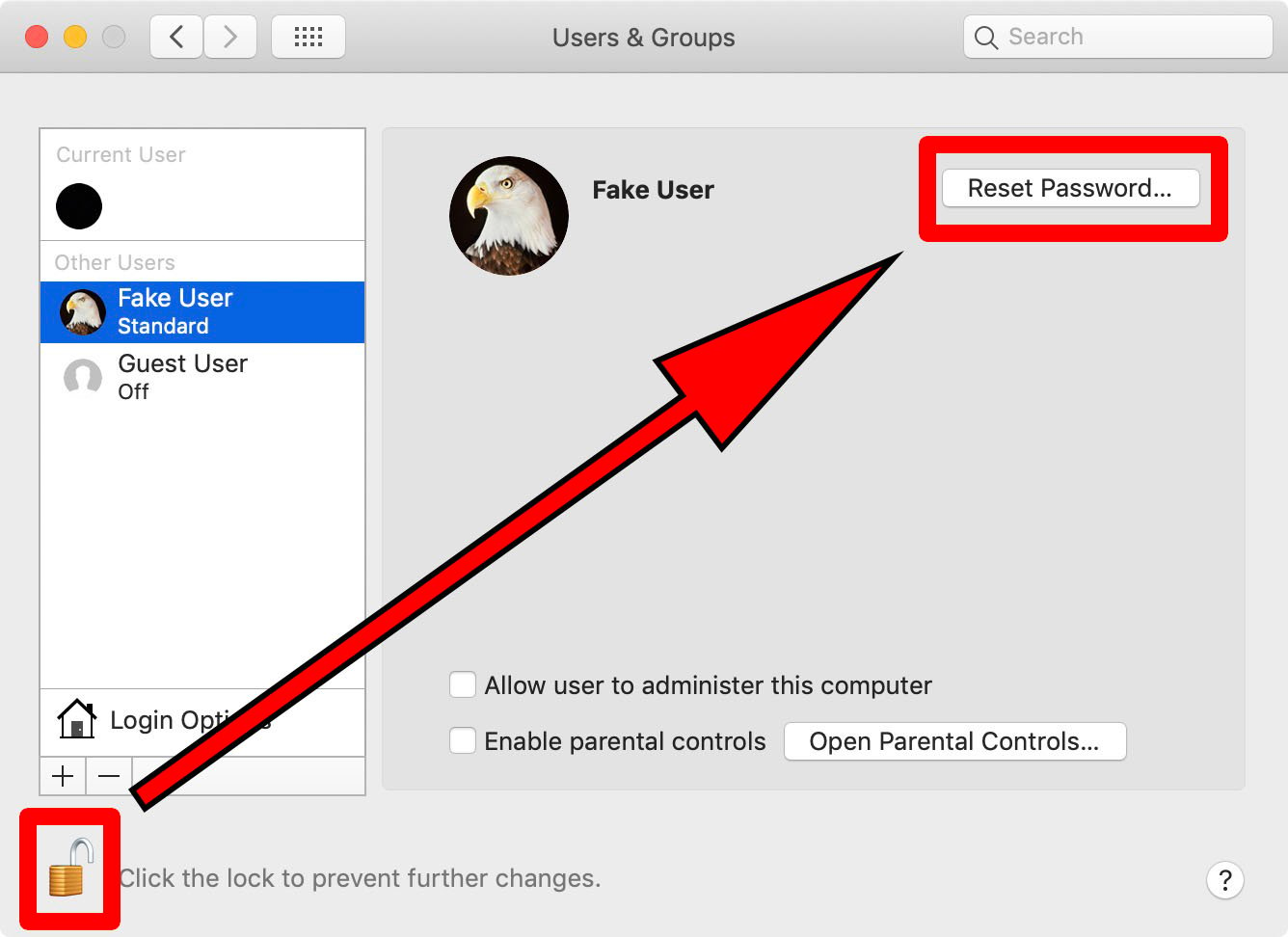

You will need to know the password, that's the purpose of the firmware password to totally lock the machine down.

Change mac password recovery install#
You will to enter the password or need the OS X install disk compatible with that machine and hold the option key while booting to select it, then reset the firmware password. If you see a lock appear and it asks for a password there, that's a firmware password. Ls /Users/ (find the name of the account)Įnter the new password twice followed by returns then Type and press return after each bold command If you dont' have the 10.6 install disk, then hold command s and boot the machine into Single User Mode (aka root). If you have the 10.6 install disk hold c or option/alt key and boot off the 10.6 disk and use the Password Reset under the Utilities menu, you will need a wired or built in keyboard. Enter your new password information, then click Reset Password. Your account password and login keychain password now match again.This is how you go about resetting your password in case you or another has forgotten it. If you see the option to reset using your recovery key Click the option to reset using your recovery key, then enter your FileVault recovery key.
Change mac password recovery mac os x#
Mac OS X 10.6 and earlier did not come with Recovery partition so you will need to use the installation Disk to boot Mac from installation Media and then get to the terminal just like in recovery mode to reset password.But there are other simple methods to reset password that does not. Choose Log Out from the Apple menu to return to the login screen. Reset Root or Admin user password in OS X 10.6, 10.5 and 10.4.Press the Delete key, then click Delete References. If you don't see a Reset My Default keychain button, close the preferences window and select the “login” keychain from the left side of the Keychain Access window. Choose Preferences from the Keychain Access menu, then click the Reset My Default Keychain button in the preferences window. After you enter your new password, Keychain Access creates an empty login keychain with no password.Open Keychain Access, which is in the Utilities folder of your Applications folder.If you didn't see an alert about your login keychain, or you see other messages asking for your old password, reset your keychain manually: Just click the Create New Keychain button in the alert.

This is expected, because the passwords for your user account and login keychain no longer match. Select ”My password doesn't work when logging in,” then click Next and follow the onscreen instructions for your user account.Īfter resetting your password and logging back in to your account, you might see an alert that the system was unable to unlock your login keychain.In the Terminal window, type resetpassword, then press Return to open the Reset Password assistant pictured above.When you see the macOS Utilities window, choose Utilities > Terminal from the menu bar.Restart again, then immediately hold down Command-R or one of the other macOS Recovery key combinations until you see the Apple logo or a spinning globe.If you can't log in with your new password after restarting your Mac, take these additional steps: Determine whether to create a new login keychain.Follow the onscreen instructions to create a new password, then click Reset Password when done.Use uppercase characters, and include the hyphens. The password field changes to a Recovery Key field. If you don't see the message after three attempts, FileVault isn't on. At the login screen, keep entering a password until you see a message saying that you can reset your password using your Recovery Key.If FileVault is turned on and you have a FileVault Recovery Key, you can use that key to reset your password.


 0 kommentar(er)
0 kommentar(er)
